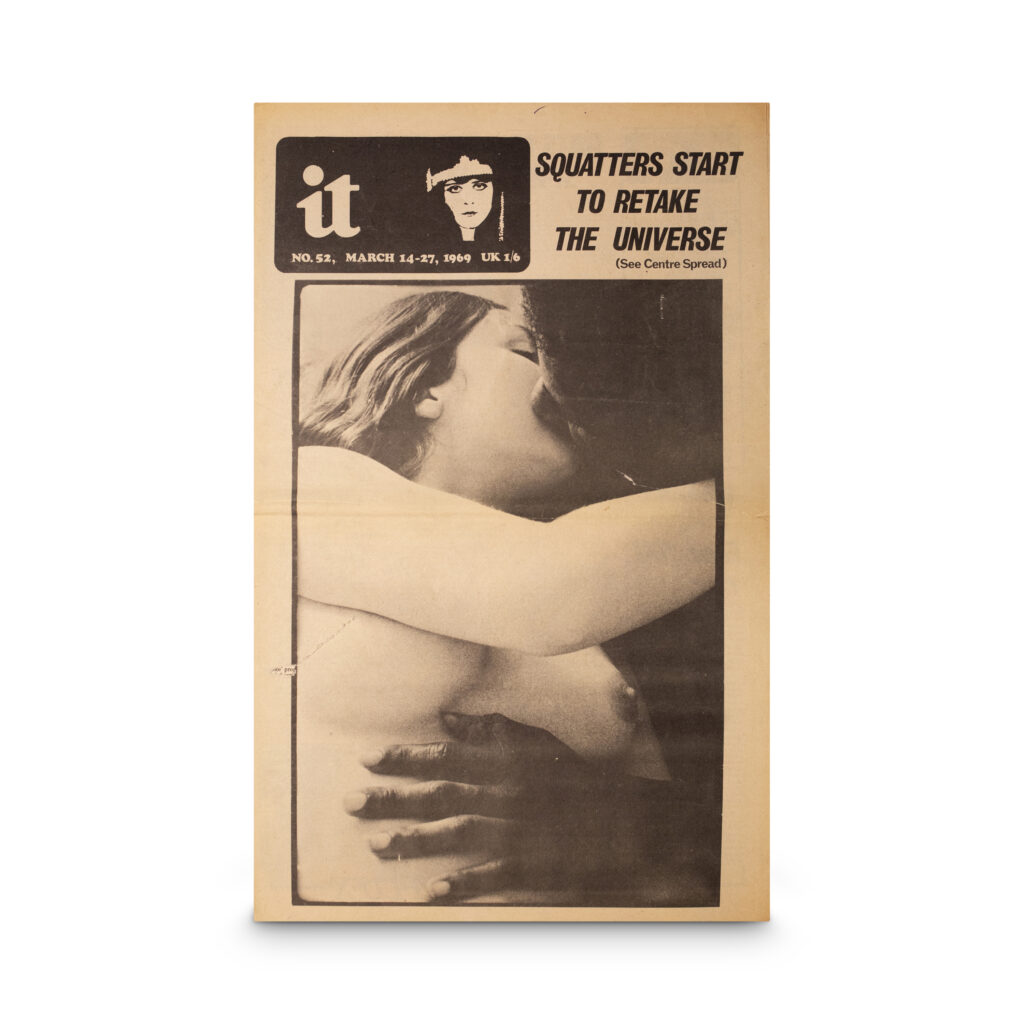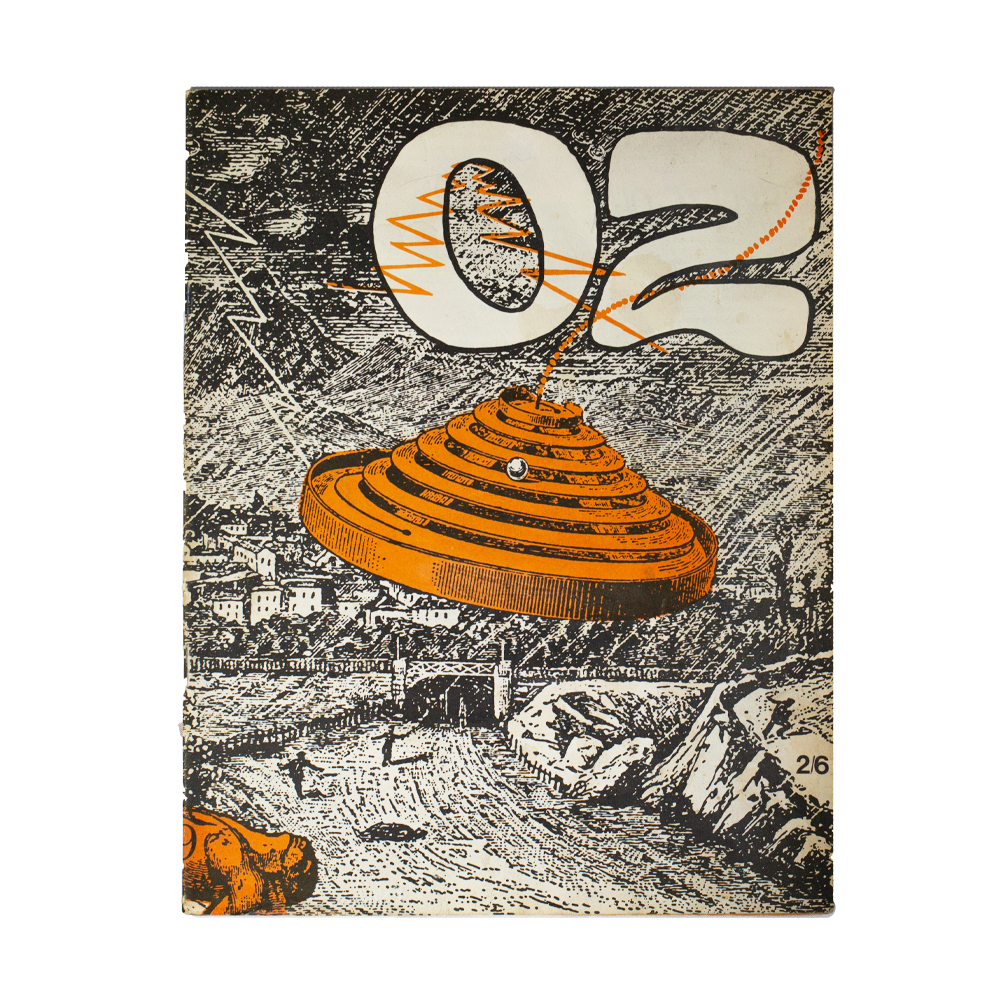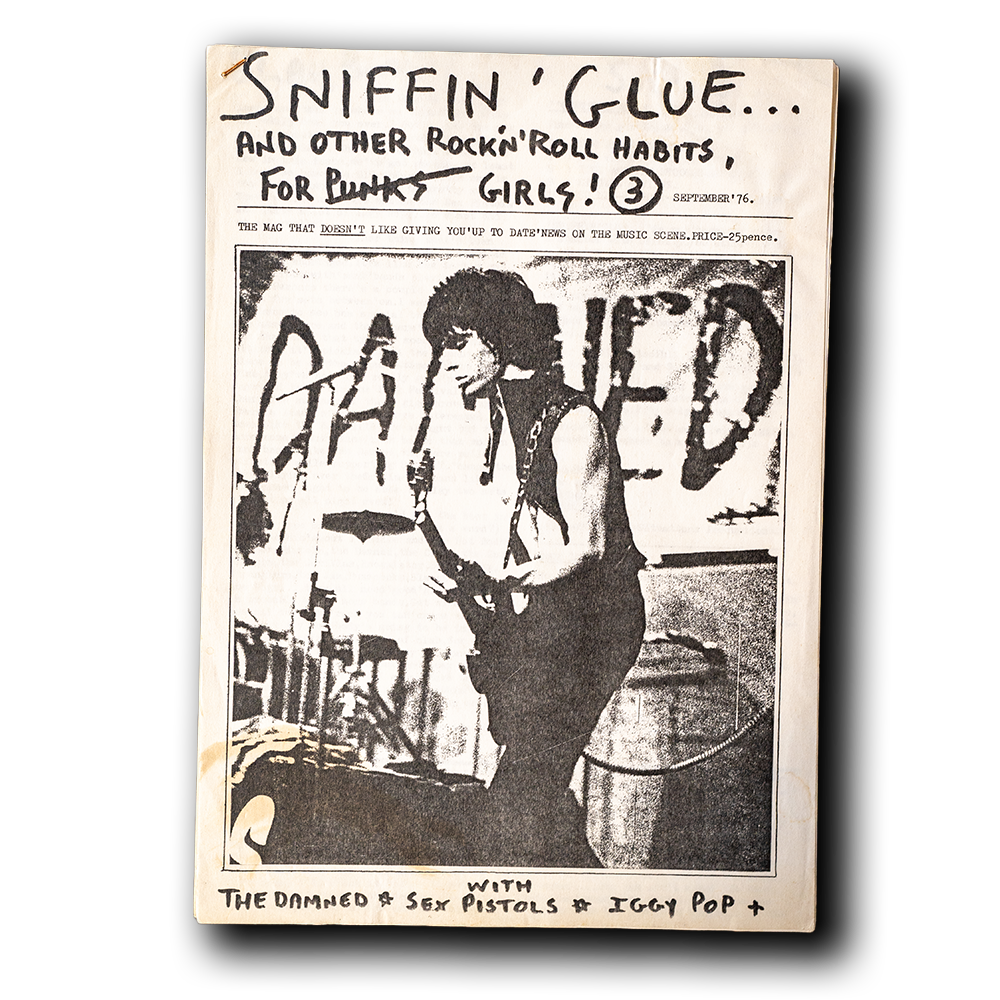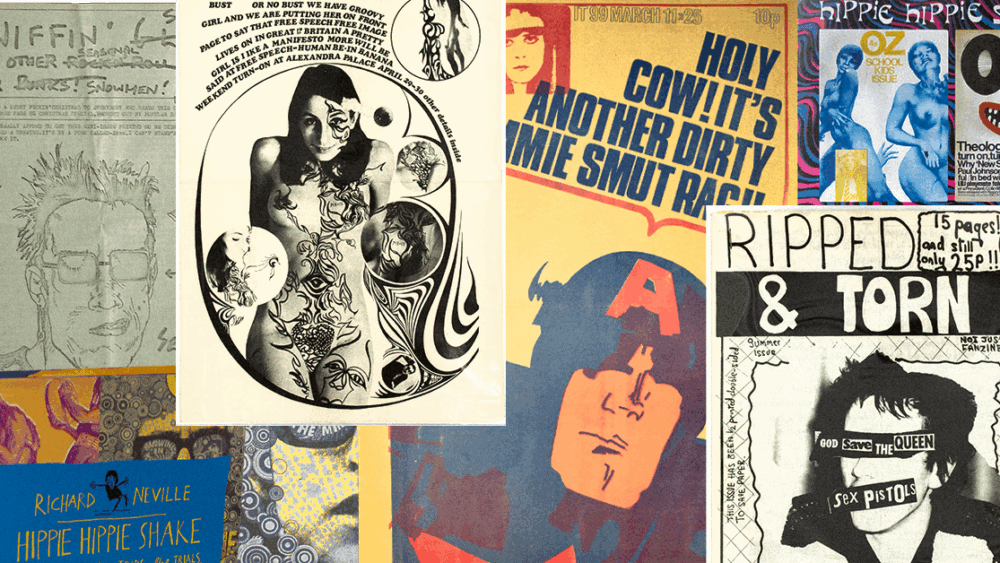This is the second of our two-part series on counterculture publications. The first centered on important publications in the USA, and this second one takes across the ocean to the United Kingdom.
Notes From the Counterculture
The 1960’s and early 1970’s represented a sweeping movement for expressionism, especially in the UK. In a broad sense, counterculture zines and newspapers played a vital role in documenting and shaping various subcultures and social movements. These “underground” zines offered platforms that were not available through mass media publications. They allowed for alternative voices to be represented covering music, art, politics, sexuality, and various personal perspectives.

A Few Examples
International Times (later IT) was launched in 1966 and was Britain’s first underground newspaper. It covered counterculture topics like experimental art, politics, drugs, anti-war and alternative lifestyles such as free love. The covers were particularly edgy, like this example on the right.

Oz was a satirical magazine that published controversial articles and psychedelic artwork, becoming a prominent voice of the counterculture. Originally Australian, the UK version was more psychedelic and confrontational. It was well known for surreal design, radical politics, and the infamous Schoolkids Issue that led to an obscenity trial in 1971.
Black Dwarf (1968–1972) was overtly political. It aligned with the New Left and student radicalism, while Gandalf’s Garden (1968–1972) represented another sub-culture and leaned into spiritualism, mysticism, and pacifism from a London shop/commune. It was definitely part hippie poetry, part Eastern philosophy.
Emergence of Punk Zines
In both the USA and UK, these counterculture zines eventually inspired the creation of their punk counterparts. Punk zines became prominent in the mid-1970s, playing a crucial role in disseminating information about the burgeoning punk scene. They connected fans and fostered a sense of community amidst the social and political turbulence of the era.

Punk zines were totems of the continued counterculture movement, albeit with a different aesthetic. They were often self-produced using basic tools like typewriters, photocopiers, and collage techniques. Sniffin’ Glue is widely recognized as the first British punk fanzine and the definitive UK punk zine. With its raw photocopied pages documenting The Clash, Sex Pistols, it typified the emerging DIY ethic. Ripped & Torn (1976–1979) was another early punk zine, more fanzine-style, but deeply embedded in the anarcho-punk scene.
The Zines Live On
The 1960s and 1970s UK counterculture press scene was smaller than in the U.S., but was nevertheless active. Like the papers and zines across the pond, they were very creative and deeply tied to music, psychedelic culture, anarchism, and later punk, as in the USA. Many titles blurred the lines between radical politics, underground art, and music journalism — and often attracted police raids for obscenity or political content. Collections of UK counterculture zines are held in institutions like the British Library and Tate, preserving this important part of cultural history. You can also browse our counterculture collection and add some to your own!



Comments are closed.